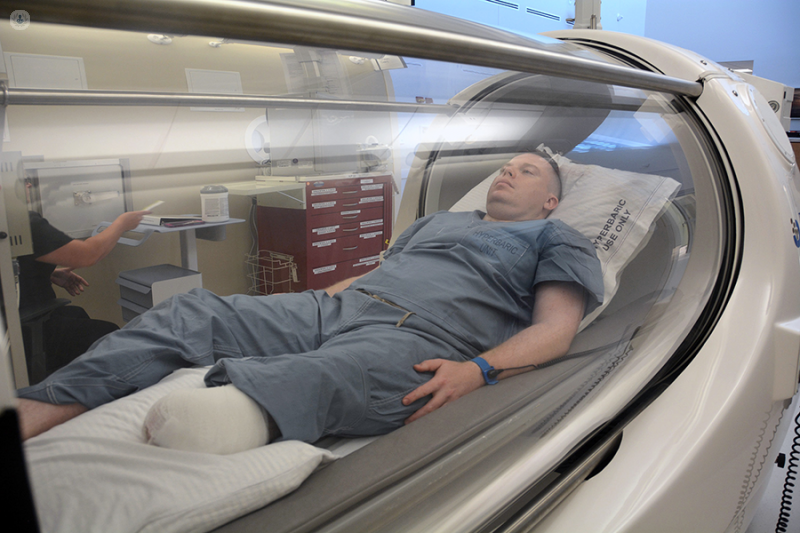

What is hyperbaric oxygen therapy?
Hyperbaric oxygen therapy involves the delivery of oxygen at a higher pressure than normal to increase the amount of oxygen in the blood.

Why is it done?
In the UK hyperbaric oxygen therapy is mainly used as a treatment in emergency situations such as:
- Decompression sickness – a condition caused by returning to normal air pressure levels after diving or tunnelling, where gas bubbles form within tissues. This can cause mild symptoms such as pain or tiredness, or serious problems such as organ failure and neurological damage.
- Gas embolism – a condition where gas bubbles enter the circulatory system during certain kinds of medical procedures
- Carbon monoxide poisoning
In addition, a number of clinics in the UK have established hyperbaric chambers to treat a wide range of chronic conditions or injuries. The theory is that increased oxygen levels in the blood helps the body to heal itself more quickly. However, evidence on the effectiveness of hyperbaric oxygen therapy varies :
- there is some evidence that it can help to heal wounds such as diabetic foot ulcers, or inflammation of the colon caused by radiation therapy
- the evidence is weak or poor for the use of hyperbaric oxygen therapy for brain injury, concussion, autism, trigeminal neuralgia, or fractures
- there is strong evidence that hyperbaric oxygen therapy for multiple sclerosis is not effective
Finally, hyperbaric oxygen therapy should be avoided if you have a collapsed lung.
What does it involve?
Hyperbaric oxygen therapy is an outpatient procedure so you don’t need to stay in hospital overnight. Treatment generally lasts between one and two hours.
Some hyperbaric chambers are designed for one person, while others are designed for multiple people to share. During the procedure, the air pressure will increase to two or three times normal pressure. If you are sharing the room with others, you might receive pure oxygen via a mask or close-fitting hood.
In most cases the procedure has no side effects, but you might experience some pressure on your eyes and ears causing temporary changes to your vision.
How do you prepare for hyperbaric oxygen therapy?
Before the procedure you might be asked to remove any cosmetics, jewellery, watches or wigs, and you might be asked not to wear deodorant or perfume.
Alternatives to this treatment
If you have carbon monoxide poisoning, standard oxygen therapy may sometimes be recommended instead if available, because there is insufficient evidence to show that hyperbaric oxygen therapy is any more effective.
Excluding the emergency situations outlined above, hyperbaric oxygen therapy is regarded as a form of complementary therapy in the UK. Therefore it’s important to continue with the medical treatment recommended by your doctor if you are living with a long-term condition such as trigeminal neuralgia or fibromyalgia.
